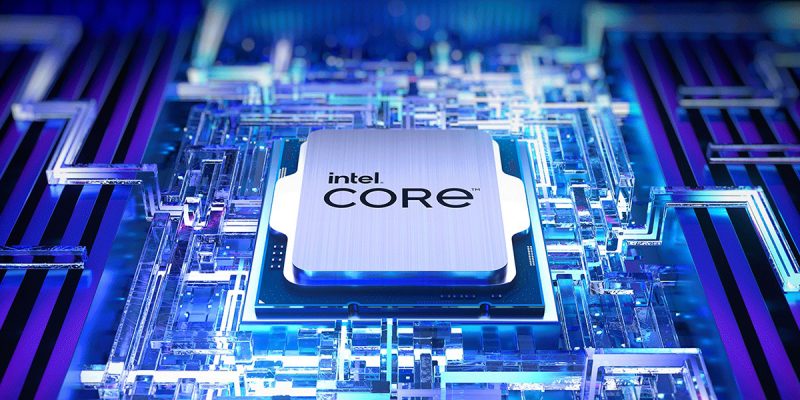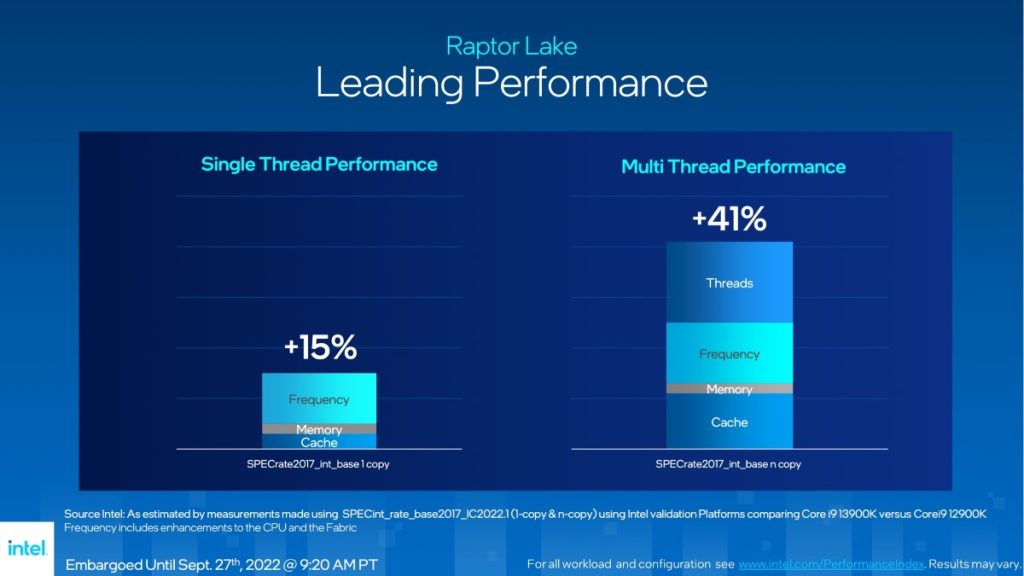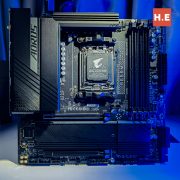
13th Gen Intel Raptor Lake now official: up to 5.8GHz, with 6.0GHz “soon”
The new 13th Gen Intel Core processors, codenamed Raptor Lake, has just been officially announced earlier today. Just after AMD made the Ryzen 7000 series official in Malaysia. The 13th Gen Intel Core processors are a small step up from last year’s 12th Gen “Alder Lake” processors, and are a pretty much a stop-gap measure before Intel brings out their A-game with Meteor Lake. With that said, the 13th Gen Intel Core processors are still quite interesting in their own right.
13th Gen Intel Core series: what’s new

Intel is giving you more cores, more cache and higher clocks with the 13th Gen Intel Core series. Yup, that’s about it. Jokes aside, Intel is bumping up clocks by up to 600MHz on the Core i9-13900K on both the P-cores and E-cores, which is a pretty significant amount. While the number of P-cores remain the same, they enlarged the L2 cache by 2MB per core.
Last but not least, they increased core counts by bumping up the number of E-cores across the stack, with the Core i9-13900K packing a total of 24 cores, 8 P-cores and a whopping 16 E-cores. The new P-cores in Raptor Lake are codenamed Raptor Cove, while the E-cores are still Gracemont cores.

Overall, all the upgrades will yield a 15% boost in single-threaded performance, and a 41% improvement in multi-threaded workloads. As Intel is still relying on their mature Intel 7 process, this also comes with a small bump up in terms of max turbo power. The 13th Gen Intel Core flagship, the Core i9-13900K, can guzzle down a max of 253W now.

Power draw may have gone up, but so has efficiency. For the same performance, Intel claims that the Core i9-13900K needs just 65W to match the Core i9-12900K sucking 241W. While I would take all this with a pinch of salt, they have proven themselves to be masters at optimizing and refining a process node.
Now, let’s move on to motherboards. This is where it really gets different from the the Ryzen 7000 series. The 13th Gen Intel Core processors will work with existing 600-series and new 700-series motherboards. But more on that later. More importantly though, is its support for DDR4, which means that you can build a 13th Gen Intel Core-based system for significantly less money than you would have to shell out for the Ryzen 7000 system. Speaking of money…
13th Gen Intel Core Specs and Price in Malaysia
Cores / Threads | P-core / E Core Base Clock (GHz) | Max Boost Clock (GHz) | Total Cache (L2 + L3) | TDP / Max Turbo Power | Price | |
| Core i9-13900K | 24C (8P + 16E) / 32T | 3.0 / 2.2 | 5.8 | 68MB (32 + 36) | 125W / 253W | $589 / RM2,799 |
| Core i9-13900KF | 24C (8P + 16E) / 32T | 3.0 / 2.2 | 5.8 | 68MB (32 + 36) | 125W / 253W | $564 / RM2,599 |
| Core i7-13700K | 16C (8P + 8E) / 24T | 3.4 / 2.5 | 5.4 | 54MB (24 + 30) | 125W / 253W | $409 / RM1,948 |
| Core i7-13700KF | 16C (8P + 8E) / 24T | 3.4 / 2.5 | 5.4 | 54MB (24 + 30) | 125W / 253W | $384 / RM1,829 |
| Core i5-13600K | 14C (6P + 8E) / 20T | 3.5 / 2.6 | 5.1 | 44MB (20 + 24) | 125W / 181W | $319 / RM1,499 |
| Core i5-13600KF | 14C (6P + 8E) / 20T | 3.5 / 2.6 | 5.1 | 44MB (20 + 24) | 125W / 181W | $294 / RM1,359 |
As compared to last-gen, Intel has raised the starting price a tad by increasing the prices for the 13th Gen Core i5 series, but the 13th Gen Core i7 and Core i9 models share the same MSRP as their predecessors. I wonder how much they will cost in Malaysia though… The halo 6.0GHz SKU will probably arrive later as the Core i9-13900KS, as Intel bins the best of the best for that.
Intel 700 series chipset: more PCIe 4.0 lanes

With every new generation of processors comes a new motherboard chipset. The Intel 700 series chipset will bring with an updated stack of features. Essentially, we are looking at a good 20 PCIe 4.0 lanes with Intel Z790, versus 12 from last year. Intel is however dropping PCIe 3.0 lanes, going from 16 in Z690, to just 8 in Z790. We will also be getting support for one extra USB 3.2 Gen 2×2 (20Gbps) port with Z790, and losing the 14 USB 2.0 ports supported by Z690. Overall, not a massive upgrade, and you would be perfectly fine with any good Z690 board out there.











[…] In essence, what we have here is an 8-phase Vcore, with two onsemi FDMF5062 smart power stages per phase. Each smart power stage for the Vcore is rated for 70A peak. With a total 1120A peak current handling capability, the Z790 AERO G is theoretically ready for some serious overclocking with any 12th or 13th Gen Intel Core processor. […]
[…] Geekbench without disabling the Internet connection. Now, it’s pretty much a given that the 13th Gen Intel Core processors are coming to laptops, but I honestly was expecting the HX-series to be a one-off thing, like Tiger […]